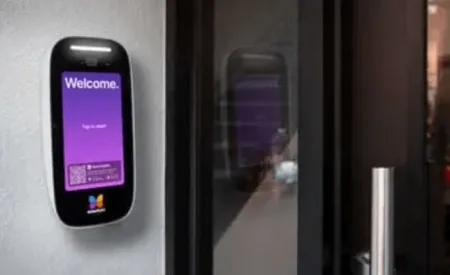A social media crisis is a situation that unfolds on social media platforms and threatens to harm an individual’s, organization’s, or brand’s reputation, credibility, or public image. These crises typically involve negative or damaging content, comments, or discussions that gain widespread attention and virality online. In the age of instant communication and worldwide connections, social media crises have the potential of getting out of control rapidly. Effective social media crisis management includes timely and mindful responses, straightforwardness, and techniques to moderate the effect of the crisis on a person, organization, or brand’s reputation.
Social Media Crisis and Management
Whether a crisis takes place online or off, you can expect a social media response from your clients. In reality, studies show that 80% of clients utilize social media to engage with a brand. Social media is becoming the favored strategy of communication since it enables shoppers to post a survey instantly for all your supporters to see. If your brand makes a mistake, clients will rapidly take to their phones to tweet or post about the issue. These comments can snowball and raise a problem into an alarming crisis. To that point, 37% of consumers who utilize social media to complain or question brands expect to induce a reaction in under 30 minutes.This is why it’s vital to have a plan in place.
Benefits of Social Media Crisis Management.
The great news is that social media can be an effective tool for managing a business crisis.
Mass Dissemination
Social media permits you to communicate with nearly your whole client base over one or two platforms. Your company can quickly broadcast a message and get ahead of a crisis when required.
Personalized Messaging + Problem-Solving
Social media permits you to talk directly with clients utilizing direct messaging or commenting. If one client has an issue, your customer service team can react immediately through private or public messages. In case the client posts freely on your timeline, an effective reaction from your customer service team can be a positive case of your team’s credibility. Numerous brands take to Facebook and Twitter messaging to handle issues in addition to traditional channels.
Create Transparency
Social media is frequently the primary halt for customers when news breaks. And brands that do social media well capitalize on the opportunity to build trust by conveying transparency to their audience.
Steps to Manage Social Media Amid a Crisis
Make a Social Media Crisis Policy based on what you Monitor
Before you make a policy for your social media crisis management, it’s critical to recognize what qualifies as a crisis. For example, you won’t require a full-blown response each time a disappointed client labels you, but it’s imperative to recognize a problem before it escalates way too far. Brainstorm together with your group to examine when something should be hailed as a potential crisis and heightened to the relevant choice makers.
Making sure to identify who will be the decision makers will be well. It’s key to select those who have experience working in communications, as they’ll be dependable for creating a response methodology. By confirming this in advance, you’ll save valuable time when executing your action plan.
During a crisis, social media monitoring becomes a crucial method for managing social media crisises effectively. By monitoring online conversations, sentiment, and emerging issues, organizations can swiftly respond to concerns, provide accurate information, and address negative publicity. Social listening helps maintain control of the narrative, allowing brands to adapt their messaging and engage with affected individuals promptly. This proactive approach can mitigate the impact of the crisis and safeguard a brand’s reputation in real-time.
Pause All Campaigns and Planned Posts
When a potential crisis has been hailed, stop all promoting campaigns and planned posts (briefly) until you’re prepared to answer. There’s nothing more regrettable than appearing insensitive or salesy when the moment calls for a more thoughtful reaction.
Furthermore, it’s way better to be a little late to the party with the right message, than find yourself sharing pre-scheduled content that further fuels a negative response from your audience.
Read the Room and Assess the Impact
The best thing you’ll be able to do amid a crisis is to take a quick beat to “read the room.” If it’s a larger scale event, such as a worldwide or cultural movement, take the time to watch what’s being said online.
In case it’s an internal circumstance, take stock of the scenario, consider all the conceivable suggestions, and revisit any previous communications (in case pertinent) that you can learn from. Whereas a timely reaction is imperative, you do not need to miss the mark on your first message — it’s what most individuals will keep in mind.
Workshop Your Response
Once you’ve had a moment to evaluate the circumstance, you’ll begin workshopping a timely response. Whereas it’s imperative not to rush and regret, you typically need to reply within 24 hours.
When approaching conversations on your social media channels, check your attitude. The key is to tune in and let your audience know that you value their opinions and appreciate their input. It may feel natural to take a defensive stance, but this may regularly do more harm than good — generating more criticism and negativity.
Make Significant Steps to Address the Problem
You’ve dealt with the crisis and things are settling down on social media — freeze over.
But now it’s time for the follow-through.
Successful crisis management implies being transparent with your audience and effectively communicating changes within your company. This implies going past an apology or shifting content for the week — you’ll need to dig deeper. Most individuals do not expect a brand to alter overnight, but sharp audiences are progressively demanding accountability from the brands they support or buy from.
Managing any type of crisis on social media can be stressful. But being arranged with the correct activity plan implies you’ll react quickly and get back your peace of mind. Take the time to set your emergency plan today so your brand is prepared for anything coming next.



